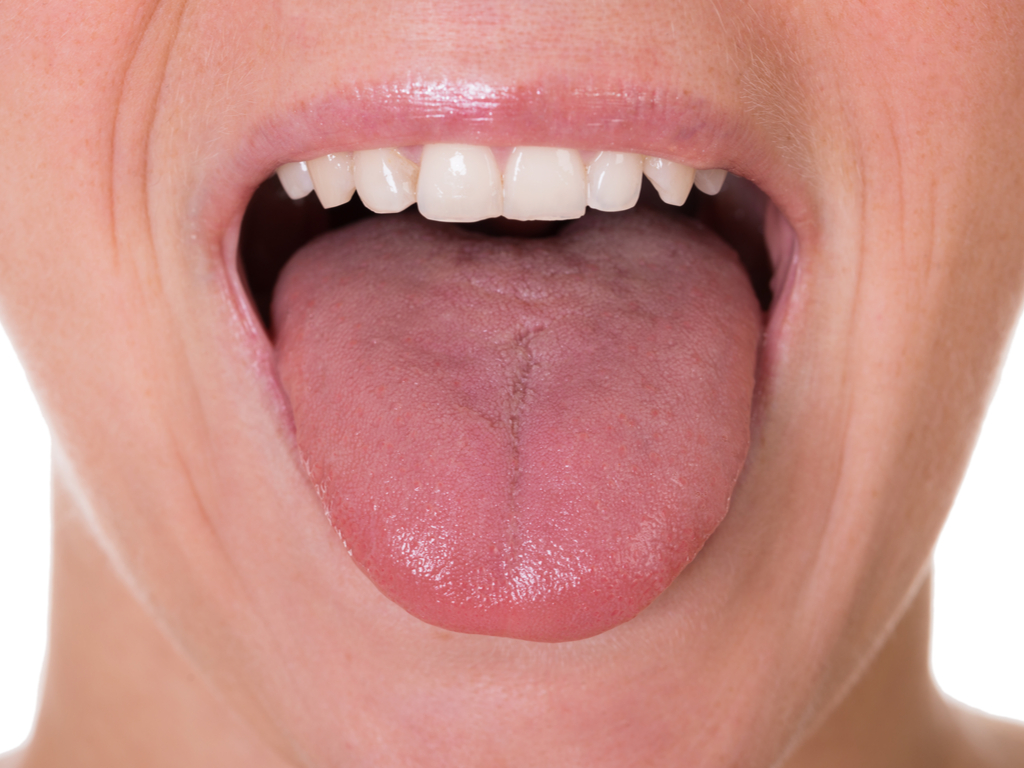A Fat Tongue May Be Blocking Your Airways While You Sleep
Obstructive sleep apnea often may stem from a fatty tongue.

Millions of Americans stop breathing in their sleep, and there may be a strange reason why: Their tongues are too fat.
Yes, you read that right: Fatty tongues seem to worsen the symptoms of obstructive sleep apnea (OSA), at least in cases related to obesity, according to a new study published Jan. 10 in the American Journal of Respiratory and Critical Care Medicine. Overweight and obese people may make up as much as 70% of those with OSA, and weight loss reliably eases the symptoms of the disorder and sometimes resolves the problem altogether, according to a 2006 study. Now, researchers think most of this improvement can be attributed to a reduction in tongue fat, specifically.
"No one really understands the relationship of obesity to sleep apnea," and no one knows much about tongue fat, in general, said Dr. Richard Schwab, senior author of the new study and chief of the Division of Sleep Medicine at the University of Pennsylvania Perelman School of Medicine. A 2007 study found that people with higher body mass indices (BMIs) accumulate a higher percentage of fat in their tongues than people with lower BMIs. The fat mostly accumulates toward the back of the tongue, which may raise the likelihood that the squishy tissue will block the throat during sleep, according to the new study.
"Yes, it seems obvious, but no one looked at this before," Schwab told Live Science.
During an OSA episode, the soft tissues of the throat collapse and partially or completely block the flow of oxygen through the body's upper airways, causing the person to stop breathing periodically, gasp for air, snore loudly and wake from their sleep, according to Stanford Health Care. Little research has addressed how fat factors into this scenario, though theoretically, the excess tissue could deform the anatomy of the upper airways.
Related: Top 11 Spooky Sleep Disorders
To find out how fat buildup in the tongue relates to sleep apnea symptoms, Schwab and his co-authors gathered 67 people with OSA and BMIs greater than 30.0, which is considered obese. Through either lifestyle modifications or surgery, the study participants lost about 10% of their overall body weight over the course of six months. The researchers took magnetic resonance imaging (MRI) scans of the participants' throats and abdomens before and after their weight loss, aiming to observe how the structure of their airways changed.
Sign up for the Live Science daily newsletter now
Get the world’s most fascinating discoveries delivered straight to your inbox.
The team also evaluated the severity of the participants' sleep apnea before and after their weight loss by observing each person in a sleep study.
By this measure, the participants' sleep apnea scores improved by more than 30% after the weight loss — largely thanks to their slimmed-down tongues, the study found. The MRI scans revealed that each participant's tongue lost significant volume after the person's weight loss, and the slimmer the tongue, the more their symptoms improved. Only tongue size, and not overall weight loss and volume reduction in other soft tissues, correlated with sleep apnea relief.
Several muscles along the walls of the throat and one used for chewing also lost volume, which may have resulted from a reduction in muscle mass or inflammation, the authors theorized. Although these changes cleared the upper airways, they were not associated with significant symptom improvement. The tongue appears to be the primary driver of the disorder, at least in this study's participants. The researchers don't know yet exactly how the enlarged tongue moves to block the upper airway, but it may be that "it just moves a little bit further back and a little further back … and suddenly, the airway gets smaller, until it collapses," Schwab said.
Understanding the role of tongue fat in OSA could pave the way for new treatments, Schwab added. He and his co-authors suggested that interventions intended to promote overall weight loss (including diets), targeted cold therapies (such as freezing tongue fat cells away) and exercises intended to tone the upper airway could help to reduce tongue fat in sleep apnea patients.
The exercises could include repeatedly touching the tongue to the roof of the mouth, or even playing instruments like the Australian didgeridoo, Schwab said. In addition, doctors could screen people of normal weight for excess tongue fat, especially in cases where they may be suffering from unprecedented snoring or sleepiness. For now, this evaluation would require an MRI, but in the future, a 5-minute ultrasound could do the trick, Schwab said.
- Ten Things You Didn't Know About Fat
- Dieters, Beware: 9 Myths That Can Make You Fat
- 5 Surprising Sleep Discoveries
Originally published on Live Science.

Nicoletta Lanese is the health channel editor at Live Science and was previously a news editor and staff writer at the site. She holds a graduate certificate in science communication from UC Santa Cruz and degrees in neuroscience and dance from the University of Florida. Her work has appeared in The Scientist, Science News, the Mercury News, Mongabay and Stanford Medicine Magazine, among other outlets. Based in NYC, she also remains heavily involved in dance and performs in local choreographers' work.










